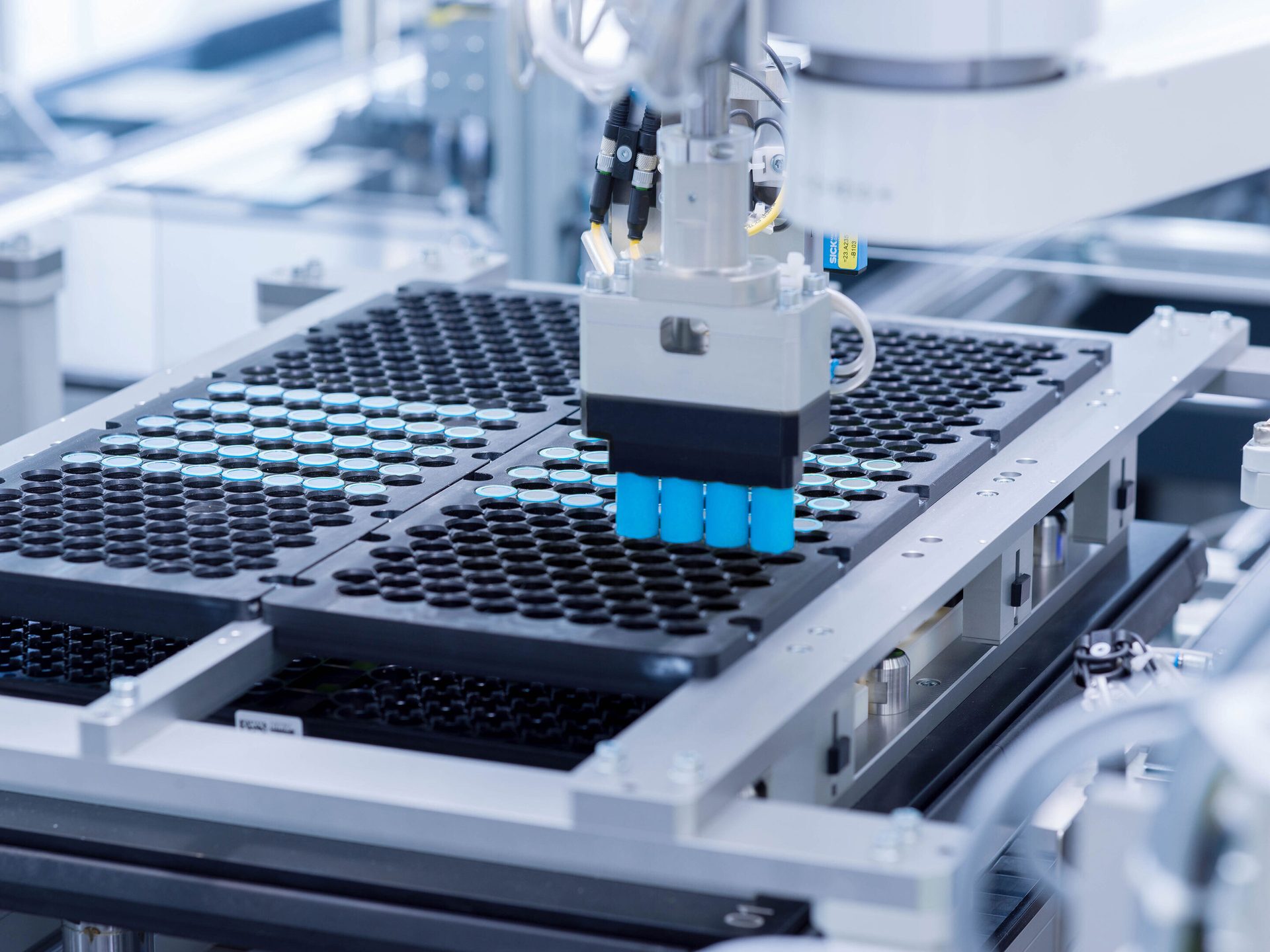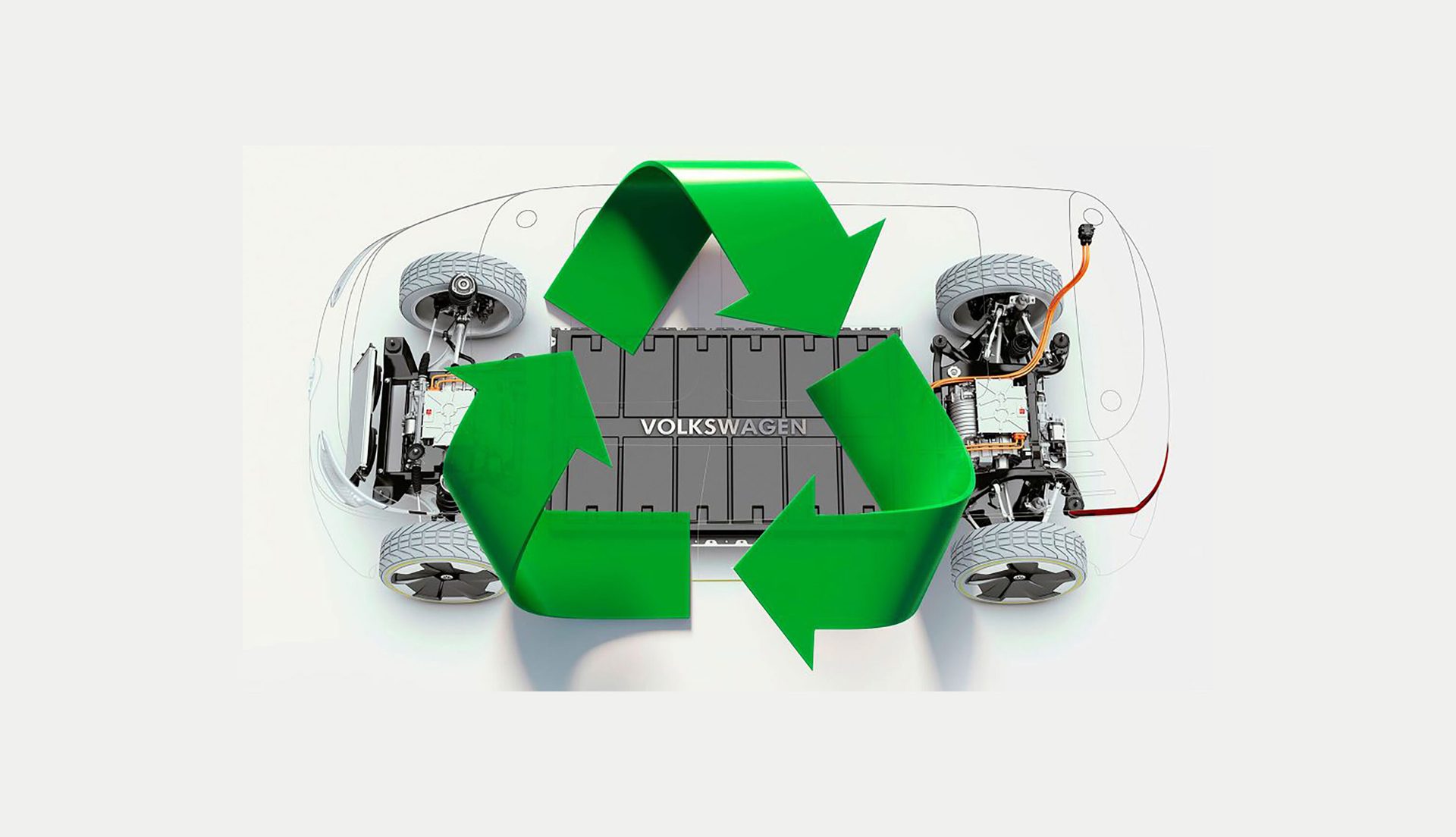By Austin Weber, Senior Editor// webera@bnpmedia.com
Dürr ‘Paints’ a Bright Picture of EV Factory Automation
INDUSTRY INSIGHT
A new facility near Detroit specializes in heavy-duty metal structures.
Dürr supplies automated assembly lines to automakers around the world. Photo courtesy Dürr Systems Inc.
Dürr AG supplies advanced automation to automakers around the world ranging from Ford Motor Co. and General Motors to Lucid Motors and Tesla. The 128-year-old company is best known for its paint shop and coating equipment, but it’s also active in many other types of production systems. In addition to robots and products for the automated application of adhesives and sealants, Dürr designs and builds final assembly, testing and filling technology for the automotive industry.
In 2023, automakers and suppliers accounted for 48 percent of the mechanical and plant engineering firm’s business. But, Dürr supplies equipment to many other manufacturing sectors as well, including the furniture and wood products, electronics, medical device and pharmaceutical industries. Its state-of-the-art, climate-friendly production technology enables manufacturers to improve energy efficiency and reduce emissions in their factories.
The Dürr Group notched record sales in 2023, increasing more than 7 percent to more than $5 billion. A large chunk of that growth was driven by battery and electric vehicle manufacturers. In fact, more than 50 percent of orders from automotive customers were related to the production of electric vehicles. The company is benefiting from both start-ups and legacy automakers converting existing plants to mass-produce EVs.
Dürr engineers have been developing electrode coating technology for lithium-ion batteries and equipment to mass-produce electric traction motors. The company provides automation for various process steps in the battery production value chain, including wet and dry coating technology, dryers and solvent recovery systems for the production of battery electrodes, plus assembly and testing technology for lithium-ion cells, modules and packs.
Other Dürr systems are used to produce electric drives and components such as axles, DC-DC converters and motors. Equipment includes balancing and spin-test systems for rotors and modular end-of-line test stands.

Dürr technology is used to assemble EV battery packs. Photo courtesy Dürr Systems Inc.
Paint shop systems also continue to be an important part of Dürr's business.
“More than 40 percent of the energy required to manufacture a car is attributable to the painting process,” says Jochen Weyrauch, Ph.D., CEO of Dürr AG. “With our sustainable technologies, we are therefore an important partner on the way to climate-neutral vehicle production.”
The company recently built the world’s first completely CO2-free automotive paint shop at Mercedes-Benz’s factory in Sindelfingen, Germany.
Dürr’s EcoProBooth painting box uses electric air circulation units that improves airflow, while reducing pressure loss and energy consumption for cooling and humidifying the air. Fluid Board is a fully assembled color dosing and color-changing system that enables fast assembly.
To bolster its automation expertise, Dürr has made several strategic acquisitions in recent years. It acquired BBS Automation in 2023 and Teamtechnik in 2021, enabling the company to create complete lines for the assembly and testing of state-of-the-art electric motors.
BBS Automation’s range for the e-mobility sector includes assembly systems for inverters, rotors, stators and traction motors. Teamtechnik offers test systems that can be used to test those types of components, in addition to entire EV power trains after assembly.
Dürr AG is based in Bietigheim-Bissingen, Germany, but its U.S. operation, Dürr Systems Inc., is located in Southfield, MI.
Autonomous & Electric Mobility recently asked Mark Murray, director of sales and marketing at Dürr Systems, to explain how the company is meeting the unique needs of electric vehicle manufacturers.

Automated guided vehicles enable automakers to scale up production at the appropriate time, rather than investing heavily upfront. Photo courtesy Dürr Systems Inc.
AEM: What type of power train and final assembly lines are electric vehicle manufacturers typically looking for today? Do they have any unique requirements vs. traditional ICE production lines?
Murray: Our customers typically request battery assembly services, which involve integrating the battery pack into the car body or drivetrain subassembly alongside axles and suspension components, followed by transitioning to decking and bolting stations. Given the differing requirements for body and chassis integration between EVs and ICE vehicles, a flexible and scalable decking solution is typically necessary for EVs, particularly due to variations in power train configurations. To address this need, we've developed standardized products capable of accommodating both vehicle types and a variety of power train assembly strategies.
In EVs, new car architectures, such as open floor designs, allow for additional assemblies like seats or center consoles fitting directly onto the drivetrain subassembly, providing humans or robots with improved access compared to traditional ICE vehicle architectures. This represents a shift in process flow from traditional cars. Early-stage testing of the battery pack, sensors and controls is increasingly crucial in EV assembly lines, due to the complexity involved in repairing or replacing components after the vehicle has been fully assembled.

This automated system coats anode and cathode electrodes used to make lithium-ion batteries. Photo courtesy Dürr Systems Inc.
AEM: Is assembly line flexibility becoming more important to legacy automakers today?
Murrary: Increased automation and robot utilization for assembly and calibration processes will reduce the workload per station. This could lead to more workstations and shorter sequences, enhancing flexibility in station arrangement. Subassemblies could be built in smaller loops, and component delivery via automated guided vehicles (AGVs) can be easily guaranteed to the main line.
AEM: What is the latest trend in automotive assembly line planning? How does augmented reality, digital twins and other advanced technology change the way that engineers design new lines?
Murray: In the automotive industry, the integration of advanced technologies, such as digital twins and virtual reality tools is increasingly crucial in assembly line planning. With these tools, engineers can create virtual models of assembly lines, simulate production processes, and analyze them to pinpoint potential bottlenecks and errors before constructing the actual line. Digital twins also aid in commissioning production facilities, significantly reducing on-site commissioning and ramp-up times. Virtual reality technology helps visualize assembly line layouts and identify potential issues pre-construction. Overall, these advanced technologies enable automotive manufacturers to develop more flexible, efficient and cost-effective assembly lines. They also foster closer collaboration among engineers and stakeholders across different locations, improving communication and streamlining workflows.
AEM: Is there a difference in philosophy between legacy automakers and start-ups when it comes to assembly line design and layout?
Murray: Traditional automakers typically focus on producing high output volumes per assembly line. As a result, they have long, sequentially arranged lines, with the required areas and building size set up to accommodate these high volumes. Planning involves incorporating pits and roof reinforcements in dedicated locations, which typically remain in place throughout production of the car model. On the other hand, start-ups typically start their production with lower volumes and aim to scale up production as sales volumes increase in the market. Therefore, there is a noticeable trend toward prioritizing flexibility and scalability in production equipment.
AEM: Are EV lines usually configured any differently than traditional ICE lines?
Murray: Electric vehicle assembly lines differ significantly from traditional ICE lines, particularly in chassis assembly and integration of complex electrical systems. These differences necessitate tailored assembly line configurations to accommodate EV requirements effectively.

Battery modules for various EV applications are assembled and tested on Teamtechnik machines. Photo courtesy Dürr Systems Inc.
AEM: What is the advantage of building EVs on the same line as ICE vehicles vs. using dedicated assembly lines?
Murray: From our perspective, integrating an EV into an existing ICE production line presents numerous challenges. While several OEMs assemble traditional ICE variants on the same line, this integration is facilitated by shared chassis and parts across vehicles. However, despite similarities in components like body, axles, suspension and steering systems, significant differences in power train variants introduce complexity in achieving a unified assembly process. Managing multiple variants, providing additional components through logistics channels, and integrating test stations become more complex as a result.
Naturally, integrating EVs into existing lines makes sense for car designs utilizing the same architecture for ICE, PHEVs and BEVs. However, if the car design is tailored specifically for pure electric vehicles, building it on a dedicated line could reduce complexity in the assembly process.
AEM: Do EV-only assembly lines typically require a smaller footprint than ICE lines?
Murray: This largely depends on the OEM and its production strategy. If significant subassemblies like batteries or axles are delivered from a supplier park, the main line will likely require less footprint. Conversely, if the OEM handles more subassembly production itself, it will need more space.

This automated system glues in side windows at Volkswagen’s EV plant in Zwickau, Germany. Photo courtesy Dürr Systems Inc.
AEM: What type of conveyors are EV manufacturers looking for? Why do AGVs play an important role in EV assembly lines?
Murray: [It's about] flexibility and scalability. AGVs offer significant benefits for relocating assembly areas or integrating additional models. Increasing production rates can be achieved seamlessly by adding additional AGVs to the line, avoiding down times during commissioning and integration of new systems. Another aspect to consider is the lower initial investment compared to conveyors, especially during the OEM start-up phase. With rising production volumes, AGVs enable scaling up at the appropriate time, rather than investing heavily upfront and potentially underutilizing equipment for a longer period of time.

The EcoProBooth reduces energy consumption and increases efficiency of automotive paint shops. Photo courtesy Dürr Systems Inc.
AEM: How does a greenfield plant vs. a brownfield facility affect the way that EV assembly lines are designed and built?
Murray: Greenfield plants offer greater flexibility in production line planning, allowing integration of subassemblies from supplier parks or in-house assembly by the OEM. With smaller initial quantities, space requirements can be minimized, and facilities can be expanded “on demand” as needed. Consequently, EV greenfield facilities can start with basic infrastructure and scale up equipment as the business grows. In contrast, brownfield plants require more planning, refurbishment and relocation of existing structures, which is often more time consuming and, in many cases, a bigger investment.

BBS Automation designed and built this automated hairpin stator assembly system for EV motors. Illustration courtesy Dürr Systems Inc.
AEM: Do EV manufacturers have any unique paint shop requirements?
Murray: Although EV bodies are similar to conventional bodies, automotive manufacturers often seek modern and sporty paintwork for EVs. This entails applying decorative and contrasting colors, like a two-tone roof while maintaining environmental friendliness and avoiding overspray masking of the car body. To achieve this, automakers often turn to specialized applicators such as Dürr’s EcoPaintJet Pro. It comprises a robot, measuring system and applicator, ensures highly defined coating without overspray, eliminating the need for manual masking and saving time during two-tone painting.
Electric vehicles also require well-reinforced rocker panels to protect their batteries in the event of a side impact. Our EcoInCure oven excels in drying these rocker panels, surpassing conventional ovens and preventing overheating in thinner body shell parts. Car bodies run transversely through the line in stop-and-go operation, facilitating direct inflow of hot curing air into the windshield opening. Jet nozzles with long throw distances target the interior of the car body, heating and cooling the structure and painted body sheets from the inside-out, resulting in a very gentle, yet effective, heating process and significantly improved top-coat appearance.

EcoPaintJet Pro ensures highly defined coating without overspray, eliminating the need for manual masking and saving time during two-tone painting. Photo courtesy Dürr Systems Inc.
May 2024 | ASSEMBLYMAG.com


